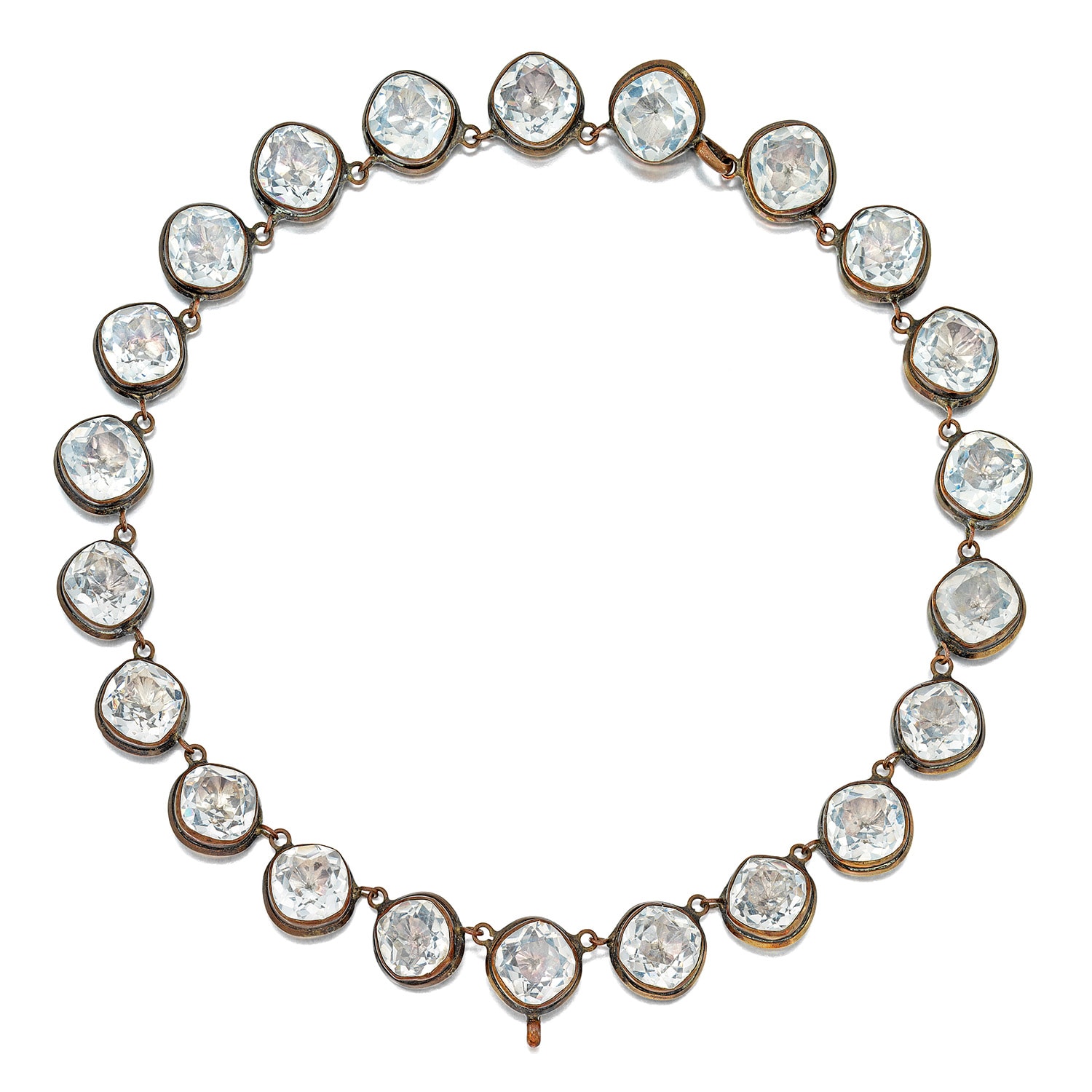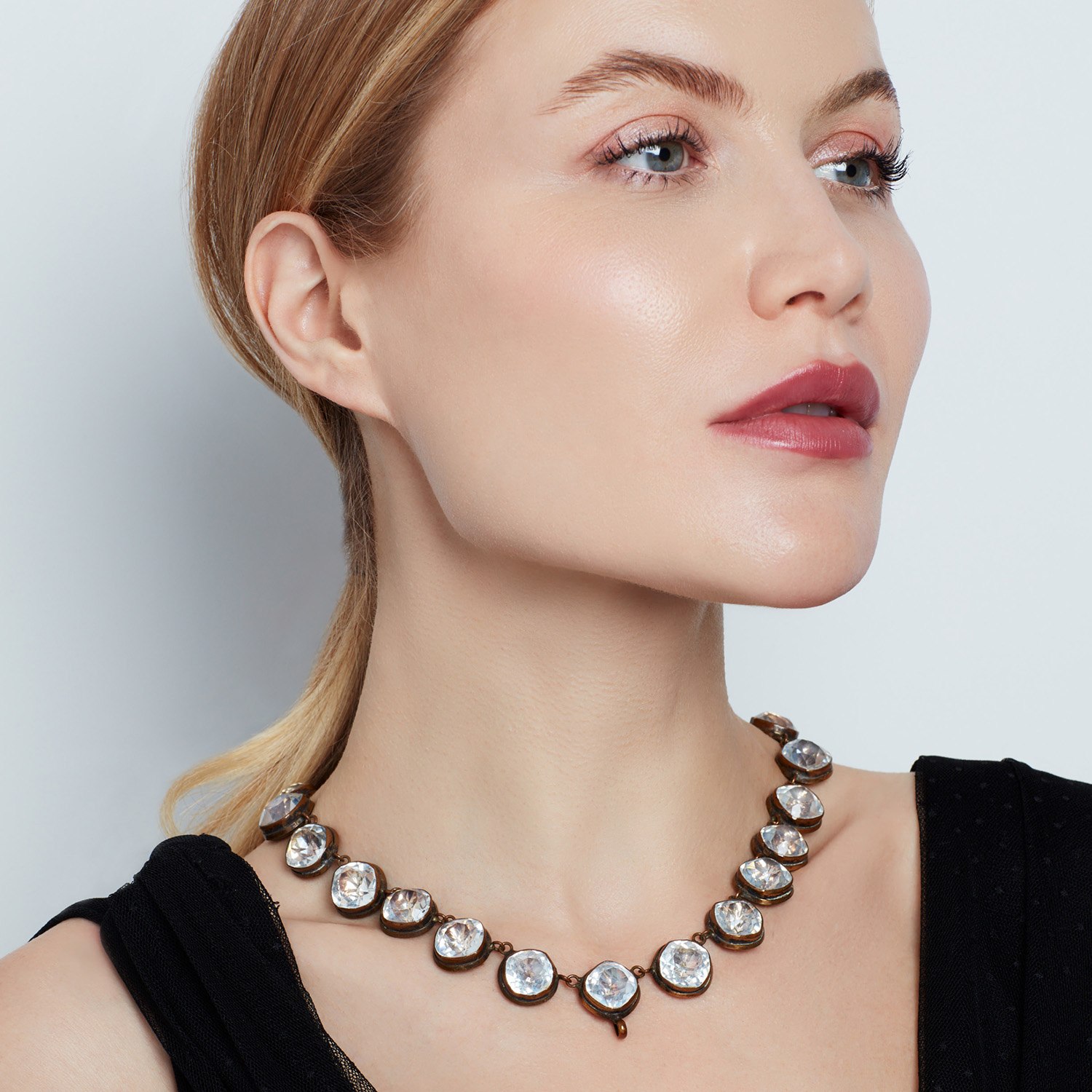



Full-Cataloguing
Paste jewelry has a long tradition dating back to ancient Greece when glass was used to imitate precious stones. These glass imitations remained relatively unchanged until 1674 when George Ravenscroft, an English glass maker, invented and patented a new gemstone imitation with a higher lead oxide content increasing the fineness and refractive index of the stones making them more closely resemble diamonds. Often these paste stones were silver backed, color foiled backed, or painted to achieve convincing imitations. Paste grew immensely in popularity when Georges Frederic Stras began crafting paste in the court of Louis XV that outshined most of the diamonds and gemstones of the time. Paste remained popular throughout history until modern mining increased the availability of diamonds and the cutting style of old European-cut diamonds became more refined and eventually transitioned to the modern brilliant-cut that we know today. Paste had a resurgence in the Art Deco period when costume jewelry was being featured with top couturiers such as Mainbocher, Schiaparelli, and Coco Chanel. Today antique paste in excellent condition remains desirable.